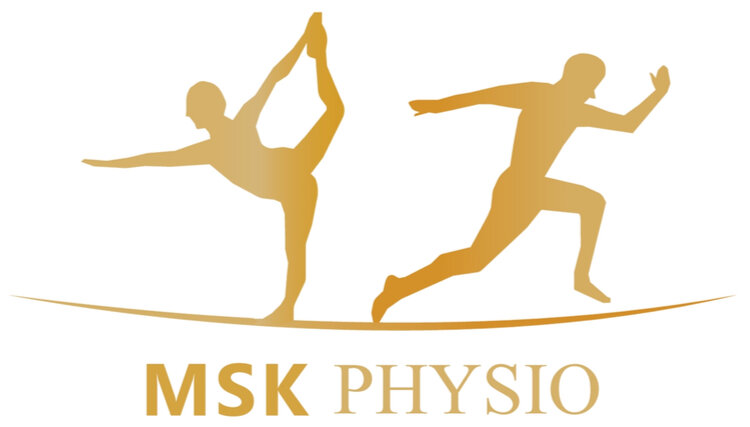Do I Really Need a Scan?
We tend to get asked by our new clients whether a scan is required or not and when to get one if needed. Scans are typically reserved for specific situations, such as when a serious condition is suspected, symptoms are worsening, or when conservative treatment has not been effective. A scan can also be misleading, revealing age-related and normal changes that may not be the cause of your pain and may cause unnecessary worry, anxiety and fear avoidance.
Bursitis: A Guide To Physiotherapy
Bursitis is a painful condition that occurs when the bursae (small, fluid-filled sacs that cushion the bones, tendons, and muscles) become inflamed. This inflammation can cause significant pain, tenderness, and restricted movement in the affected joint.
Understanding Lower Back Pain: Causes, Symptoms, and Relief Strategies
Lower back pain is one of the most common health concerns worldwide, affecting people of all ages and lifestyles. Whether it’s caused by poor posture, muscle strain, a herniated disc, or chronic conditions like sciatica, understanding the root cause is the first step to effective treatment. In this guide, we’ll explore the main causes of lower back pain, early warning signs you shouldn’t ignore, tips for relief.
Stretching vs Strengthening: Research Reveals What Works Best
Explore the latest evidence‑based insights on whether stretching or strengthening is more effective for flexibility, pain relief, and posture.
Seddon's Nerve Injury Classification
Seddon's classification, which is used in a clinical setting, consists of three terms to describe peripheral nerve injuries based on severity. Ranging from least to most severe, these are: Neuropraxia, Axonotmesis and Neurotmesis.
ACL Injury: Causes, Symptoms & Treatment
The anterior cruciate ligament is an important ligament that helps stabilise the knee joint. Unfortunately, ACL injuries are common, particularly among athletes engaged in sports that involve sudden stops, changes in direction, or jumping. It usually occurs when the ACL, one of the major ligaments in the knee, tears or stretches beyond its normal capacity.
Understanding Ankle Sprains
Ankle sprains are very common and usually occur when you twist, roll or turn your ankle in an awkward position. Following these motions - ligament tears can be noted causing an increase in pain, decreased range of movement and swelling or bruising.
Our ligaments help stabilise our joints and can be found all around the body connecting bones to bones. Ligaments help our joints avoid excessive movements and therefore when a ligament is overstretched a tear can be noted.
Understanding Running Injuries
Running is a brilliant form of exercise to stay fit and healthy, but it's not without its risks. In this blog, we’ll explore some of the common running injuries, their causes, symptoms, and most importantly, how to treat them.
What Type Do I Have? (Nerve Pain Explained)
Nerve pain can be very uncomfortable and limiting at times. Clients who often notice nerve pain present in many different ways. For example, some clients may feel sharp shooting pains as others may feel dull aches, reduced sensations, muscle weakness or even pins and needles and numbness.
HEAT & ICE (What Do I Choose?)
Heat is often useful when used for longer periods of time compared to Ice/cold therapy. Minor issues such as aches, tension or stiffness can be relieved by heat treatment.
Cold treatment is recommended with acute injuries for example after a sprain following an accident/injury within the first 24-48 hours
Plantar Fasciitis - Overview & Physiotherapy
Plantar fasciitis is one of the most common causes of foot and heel pain in both males and females. This condition is caused when the thick band of tissue known as the plantar fascia becomes inflamed. The plantar fascia is situated at the bottom of the foot connecting the heel bone to the toes.
Plantar fasciitis is usually noted in long distance runners however other factors such as weight and uncomfortable footwear can also increase the risk of this condition.
Frozen Shoulder: Overview & Treatment - Improving Range of Movement, Pain & Function
Frozen shoulder (also be known as adhesive capsulitis) is a shoulder condition, which presents with stiffness, pain and loss of shoulder function.
Physiotherapy is one of the most common referral pathways for clients with frozen shoulder as exercise rehabilitation and gentle hands on treatment can be performed to relive pain and improve function. Exercises can include range of movement and stretching followed by gentle strengthening as symptoms allow.
Knee Replacement - Overview, Physiotherapy & Rehabilitation
The knee joint is frequently used for daily duties and activities, therefore maintaining a healthy knee joint is vital. Knee replacement is a type of surgery for individuals suffering from severe knee pain and have restriction in range of movement. Knee replacements are also know as knee arthroplasty and can be partial or total knee replacement. Knee replacements are a common surgical procedure aimed to reduce discomfort and increase knee movement allowing a better quality of life for the client by resurfacing the damaged areas of the knee joint. This type of surgery may be considered with individuals with arthritis or severe knee injury. Three common types of arthritis include: Osteoarthritis, Rheumatoid Arthritis and Traumatic Arthritis.














